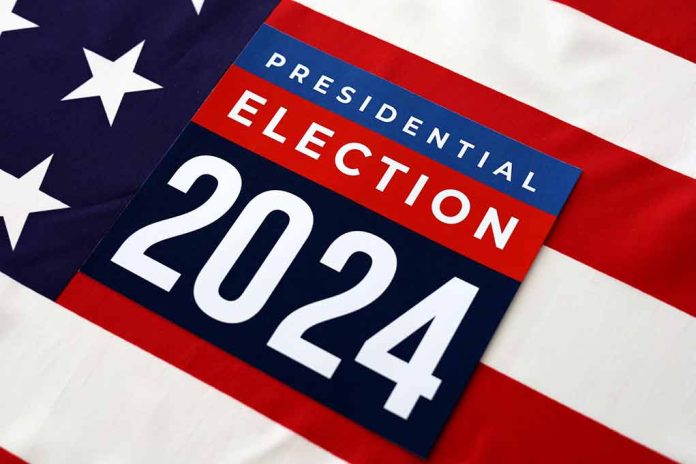
Analysts warn that the proposals from Donald Trump and Kamala Harris could significantly inflate the national debt.
At a Glance
- Trump’s proposals could increase federal deficits by $5.8 trillion.
- Harris’s proposals could add $1.2 trillion to the national debt.
- Trump’s strategies include extending tax cuts and adding new tariffs.
- Harris plans to expand social benefits and raise corporate taxes.
Trump’s Economic Proposals
Donald Trump’s economic proposals for the coming decade include tax cuts and increased military spending. Analysts project these measures will significantly contribute to the national debt, adding $5.8 trillion. Key aspects of Trump’s plan feature the permanent extension of the 2017 tax cuts, the elimination of taxes on Social Security benefits, and further reductions in corporate taxes.
Trump plans to fund some of his initiatives through the imposition of 10% tariffs on all imports and 60% tariffs on Chinese imports. Experts warn that these tariffs could reawaken inflationary pressures within the economy. Trump’s campaign defends his economic strategy by citing his business acumen and previous economic growth achievements.
Trump plans would add $5.8 trillion to national debt
Harris plans would add $1.2 trillion to national debt.https://t.co/BlT73l7mXG
— Stephen Neukam (@stephen_neukam) August 28, 2024
Harris’s Economic Proposals
Kamala Harris presents a contrasting economic plan that focuses on social and infrastructure projects. Her proposals, which include expanding the child tax credit and providing first-time homebuyers with a $25,000 subsidy, are expected to add $1.2 trillion to the national debt over ten years. Part of her strategy to offset these costs includes an increase in the corporate tax rate to 28%.
“Donald Trump’s Project 2025 economic agenda is an inflation and deficit bomb that makes the middle class pay more and the rich pay less,” Harris campaign spokesperson James Singer said in a statement to CNBC.
Following President Joe Biden’s exit from the race, the Harris campaign is under pressure to roll out its comprehensive economic agenda quickly. Critics have labeled Trump’s agenda as an “inflation and deficit bomb,” while Trump’s supporters point to his record of building a strong economy as a validation of his proposals.
Comparing the Long-Term Financial Impact
Analyses from the Penn Wharton Budget Model indicate that while both proposals will increase the national debt, Trump’s plans will have a more severe impact. By 2034, Trump’s proposals could increase the national debt by 9.3% above its current trajectory, whereas Harris’s would add approximately 4.4%. Over a longer horizon, Trump’s initiatives could raise the national debt by 12.7% by 2054, compared to Harris’s increase of 7.7%.
“Donald Trump’s campaign promises would send the national debt soaring much faster than Kamala Harris’ would, per two new analyses from the Penn Wharton Budget Model.” – Axios
Forecasts also suggest that while Trump’s economic plans might accelerate GDP growth over the next decade, it could lead to a 0.4% decrease in the U.S. GDP by 2034. Conversely, Harris’s plans may lead to a 1.3% decline in GDP over the same period.
The complexity of these economic proposals and their far-reaching consequences highlight the importance of scrutinizing the fiscal sustainability of the policies advocated by both candidates. With the national debt already hitting $35 trillion, fiscal responsibility remains a critical concern for voters.
“The bottom line: If the GOP was ever a party committed to reducing the national debt, it’s not anymore.” – Axios
As campaigns unfold, both candidates aim to frame their economic policies as beneficial to the average American, making the ongoing discussion about debt and economic health central to the 2024 election.
Sources
1. Trump plans would add $5.8 trillion to national debt
2. Trump budget would spike deficits by nearly 5 times Harris proposal, says Penn Wharton









